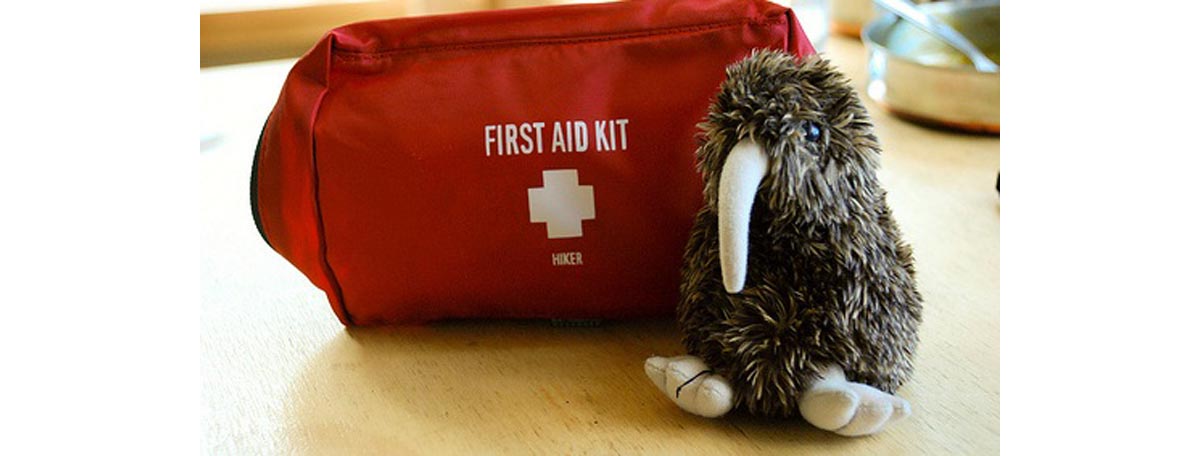Table of Contents
Accidents invariably happen, regardless of how prepared you are or how careful you try to be. Here is a basic guide on treating your baby’s boo-boos, large and small.

Cuts and Scrapes
Unfortunately, there is no amount of safety prevention that can prevent minor cuts and scrapes. When babies are learning to walk and run, they are unsteady on their feet and often clumsy. This means that cuts and scrapes happen. Luckily for you, most of these are minor and can be treated at home.
Home Care
- Wash your hands with antibacterial soap and warm water.
- Use lukewarm water to cleanse away any blood and dirt that is on the wound surface and cleanse the cut with antibacterial soap and water.
- Gently pat the area dry with a clean gauze pad.
- Apply pressure if the cut is bleeding for about 5 minutes.
- Apply antibacterial ointment (Bacitracin or Neosporin) and then cover the wound with a bandage.
- Keep the area covered and change the bandage daily.
You Should Go to the Doctor When…
- The cut is ragged, deep, or longer than an inch.
- The cut is embedded with gravel or dirt.
- The cut is caused by a sharp object, rusty object, or animal or human bite.
- Heavy bleeding continues after direct pressure is applied.
READ Home Remedies for Skin Burns and Cuts
Burns and Scalds
Whether it is a hot iron or a cup of coffee, these types of accidents are common in children. Curious crawlers are more prone to these types of injuries. According to experts the only type of burns that should be treated at home are first-degree burns that affects only the outer layer of skin.
Home Care
- Run cool water (not icy water) over the area for around 5 to 10 minutes to lower the skin temperature.
- Apply a thin layer of aloe vera cream or gel to ease the pain.
- Cover the area with a damp gauze.
You Should Go to the Doctor When…
- The burn has blistering areas on it. This indicates that it is a second-degree burn that affects the outer and underlying layers of skin.
- The burn covers a large area.
- The burn is on the face, hands, feet, or genital regions.
Insect Bites and Stings
Mosquitoes, bees, spiders, and other insects will often bite you and your baby. Most bites and stings are harmless, but some can cause allergic reactions, infections, and serious pain.
Home Care
- Apply a cool compress or rub with an ice cube to ease itching.
- Use Calamine lotion or a baking soda paste to alleviate itching.
- Cut down or file your child’s fingernails so that scratching don’t result in infection.
- Use an over-the-counter topical antihistamine to relieve itching.
- Use an over-the-counter topical steroid (hydrocortisone 1%) to decrease swelling.
READ Insect Stings and Bites Remedies
You Should Go to the Doctor When…
- The insect bite or sting appears large, becomes painful, or looks infected.
- The insect bite or sting causes other symptoms to occur such as fatigue, nausea and vomiting, aching joints, or a rash. This could indicate Lyme disease.
You Should Call 911 If…
Your child has an allergic reaction that can be a potentially life-threatening condition leading to throat swelling, difficult breathing, enlarged lips, wheezing, hives, and other symptoms of anaphylaxis.
- Keep Kids Healthy, LLC. (1999). First Aid.
- Photo courtesy of ks_marks on Flickr: www.flickr.com/photos/ks_marks/5469156068/


Your thoughts on this